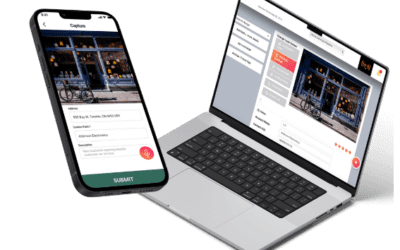Ready to get started?
Sales incentives have long been used to motivate employees and drive up sales. Letting your employees know that they are valued and valuable members of your team can help with employee satisfaction and retention. Investing in your employees is investing in your bottom line, and sales incentives are an incredible way to let employees know you appreciate their hard work.
Holding onto key employees during a time where many companies are hiring and employees are starting to leave jobs in droves for better working conditions and experience can be a difficult task. So how do you retain employees and keep them satisfied when they could easily find another job elsewhere? The answer is sales incentives. According to a study done by Deloitte, a whopping 44% of people surveyed said they would remain at their job if they were incentivized with bonuses, both cash, and non-cash.
So what kind of sales incentives should you be offering your employees? Before we delve into that, let’s take a look at what, exactly, are sales incentives.
What are Sales Incentives?
To put it briefly, sales incentives are rewards you give your employees for reaching specific targets or goals. Simply being acknowledged for their work is also a great way to motivate your employees, but it won’t work every time for every employee. This is why it’s important to offer financial or material incentives to inspire your team to reach for their set goals and then surpass them.
Sales incentives are meant to reward your salespeople for selling a specific number of service hours or products, or for pushing a number of prospects down the pipeline, or even for how they closed the deal, rather than how many deals they closed. It doesn’t always have to be about closing the deal, either, especially with products that have longer sales cycles. Employees don’t want to wait a year or more for certain prospects to finally sign their contracts before reaping their rewards.
How To Apply The Right Sales Incentive Program To Your Team
Finding the right sales incentive program to offer your team can be almost as difficult as getting your team motivated without sales incentives. This is because everyone on your team is an individual. What might motivate one person could be completely uninspiring to another. You need to discover what it is that motivates every salesperson on your team. This can be done by taking polls or surveys, getting to know your employees and knowing what they like, or offering a list of incentives for them to choose from.
By learning what motivates your team, or members of your team, you can easily create a list of sales incentives that will push them to reach and surpass their goals. Once you’ve done this, it’s a good idea to sit down with your team to discuss with them achievable goals both as a team and as individual sales reps. This will help you learn more about their sales styles, and what they believe they are capable of when properly motivated. You can raise or lower goals as you see fit in order to inspire your team, but also to ensure that they don’t feel left behind or burnt out. On every team, there will be a top seller, so it’s imperative that you continue to motivate them to push themselves further, while at the same time, setting achievable goals for the team members who might not be as good as your top earner. Otherwise, they may just give up if they feel they’ll never reach the goals that another team member will.

Next, it’s time to determine the metrics of your sales incentive program. Will your team receive bonuses weekly based on the number of appointments they’ve set up, or monthly based on their closed deals, or even quarterly based on closed deals or customers retained? Or perhaps you’ll set up a program where your team is incentivized for both short-term and long-term goals. This is likely your best bet, as it pushes your employees to work harder both short and long-term, but also ensures they don’t have to wait too long to be rewarded.
Everyone loves a bit of extra cash, but money isn’t the only motivator you can use in your sales incentive program. Of course, do include financial rewards, but sometimes, people can be motivated by other things, like concert or sporting event tickets, new tech gadgets, nights out, or even extra paid vacation days or sick days. This is why finding out what is important to your employees is paramount for implementing a good sales incentive strategy.
The Only Five Sales Incentive Schemes You Need To Consider
Though there are numerous sales incentive schemes to potentially implement in your business, many of them don’t work or simply fail to adequately motivate team members. It is for this reason that we’ve compiled a list of five of the most tried and true sales incentives schemes. Your sales incentive needs to excite and motivate your team and let them know that they are valued members of your company. It’s important that your sales incentive strategy aligns with your company culture and promotes a positive work environment for your team while eschewing over-competitiveness. Yes, you want your team to compete to be the best, but at the same time, you want them to feel and act like a team. Encouraging over-competitiveness will do nothing but promote a team laden with rivalry and tension. For this reason, sales incentive schemes built for both individuals and teams as a whole are the best way to go.
Role-Specific Incentives
Incentivizing your sales reps to play to their individual strengths will help to foster an equal and positive work environment. This is why having role-specific sales incentives are a great way to reward and motivate your team. This way, if you have a superstar rep on your team, you can set up a tiered incentive program that they can use to achieve and surpass their goals, but that will also make rewards achievable for other reps on your team who aren’t the superstar. As long as you don’t put a cap on the reward goal, your superstar will continue to work hard to get further and further up the tier. Capping an incentive at a certain number of sales, or amount of reward will just end up with the superstar slowing down once they’ve reached their top goal, which is what you don’t want to happen.
Split Incentives
Oftentimes, a product or service may require more than one sales rep to work together to sell to a prospect, or an already implemented product may need an upgrade, which would call for a sales manager to step in for clarification and explanation. When these situations arise, split incentive programs work well to encourage team members to work collaboratively to reach their goals and get their rewards. Determining how you will split the incentive is up to you, whether it’s straight down the middle, or a predetermined percentage to each team member involved. Just ensure that whatever you decide is known to all team members beforehand to avoid any contention.
Presales Incentives
With the ever-growing number of companies out there vying for market space, consumers are spending more and more time deciding which company or product to go with before signing a contract. They may ask for pitches and demos from multiple competitors before deciding on one. This can lead to drawn-out sales cycles, which can, in turn, lead to disheartened sales reps who might think they’ll never reach their goal to reap the rewards. Presales incentives are a great way to reward employees throughout a prolonged sales cycle. You can choose to set short-term and long-term goals to receive their incentives, and/or decide to reward them throughout the various stages of the sales cycle.
Omnichannel Incentives
More and more sales are being achieved through the internet, with buyers using websites, AI, and even social media to compare, decide, and finally buy products and services. This can lead to sales reps seeing omnichannel sales as their competitors, even when it’s coming from their company. But omnichannel sales are great for companies themselves because using every aspect possible to drive sales is key. So how do you help your team members to see omnichannel marketing as a boon, rather than a bane? By creating omnichannel sales incentives. According to PipeDrive, “Omnichannel incentives focus on rewarding reps for the part they play in the overall process.” So even if a buyer does most of the purchase process online, if a sales rep is there in person for the signing of the contract, they can be rewarded for that.
Advanced Analytics-Based Target Setting
It can be very difficult to set up a sales incentive program without being able to foresee potential sales quotas or other metrics involved. This can be overcome by using advanced analytics-based target setting to create a more accurate picture of sales projections. By evaluating past data sets, your system can predict customer demand and sales and create a model based on that. Activity-based selling places greater merit on what actions a salesperson takes during the selling process than it does on the end result. In essence, you’re rewarding your team members for how they closed the deal, not on the closing of the deal itself.
Sales Incentive Ideas
First and foremost, it’s important to ascertain whether you want to give out cash rewards, or non-cash rewards, or maybe even a mix of both. It really depends on what it is that motivates your team members to work their hardest. Some people are motivated by financial incentives, while others prefer gift cards or material rewards. There is no right or wrong answer here. It truly depends on your team members and their desires for rewards.
If you opt to go with the non-cash rewards, it can be anxiety-inducing trying to decide what to choose and what your team members would like best. Here are a few ideas to get you started on creating your sales incentive strategy.
Gift Cards
Everyone likes gift cards, and they also give your team more freedom to decide what it is they want for their reward. Prepaid Mastercards or Visas are always good, as are gas cards, grocery cards, and Amazon.
Food Delivery Credit
Sometimes, we’re just not in the mood to cook. Credit for companies like Uber Eats or DoorDash may be good incentives for some employees who are too tired after work to cook full meals.
Subscription to a Streaming Service
Everyone has some sort of streaming service these days, so why not offer a year subscription to a service like Netflix or Hulu to a top-performing team member so they can relax with their favorite TV show or movie after a long day of work?
Tech Gadgets
Some people prefer material rewards to incentivize them. Tablets, smartwatches, laptops, noise-canceling headphones, and things like VR headsets or gaming consoles are good ideas for those techy team members.
Wine Club Membership
Wine or beers of the month clubs are huge these days. Offering a month or year-long subscription to a wine club is great for those hobby sommeliers.
Subscription Boxes
Subscription boxes come in all shapes and sizes, and are always fun to get. Who doesn’t like a monthly surprise in their mailbox? From food and snack boxes, to monthly book clubs, to board games, candles, ties, cigars, and much, much more, you can find a subscription box for just about anyone.
A Gym Membership
Gym memberships are great incentives for employees who love to stay fit!
Learning Opportunities
There are online and in-person classes for so many things these days. Team members can develop further sales skills with professional courses, or learn a new language to tap into a new market, or even open up their artistic side with a writing or painting course. Some people just love to learn.
Final Thoughts
As a manager or team lead, it’s your job to keep your team members happy in their jobs and motivated to do their best. Sales incentives can help you do this easily, as long as you draw up the right sales incentive strategy for your specific team. Remember that everyone is an individual, but they also work together as a team, so creating the right incentive program is important to ensure everyone’s happiness. Investing in your team is investing in your bottom line.
How we do it at Wingmate…
Relationship selling is a great marketing tactic to not only sell your product or service but also to retain customers. Prospects are looking for long-term relationships these days, and are far more likely to return to a company that they trust and have a good relationship with. If you follow these tips and tricks, you’ll be well on your way to becoming a relationship selling pro.
Other Articles
Enhancing customer satisfaction with a mobile CRM App
Ready to get started?Are you looking for a way to enhance customer satisfaction in your sales process? Mobile CRM (Customer Relationship Management) apps are the perfect tool to help sales reps stay on top of their customer interactions and keep track of customer...
Lead Management Process
Ready to get started?The lead management process is an important part of any business. It is a method that bridges the gap between marketing and sales which increases the chances of turning prospects into customers and ultimately results in more revenue for your...






